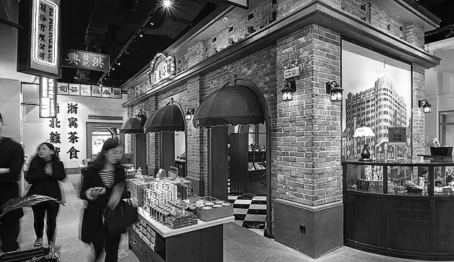The transformation of shopping


In 1917, the Sincere Department Store was founded in Shanghai by the Sincere Company Limited. While this department store also sold pricey global goods, it stood out from the store by Whiteaway, Laidlaw & Co by introducing new functions to the space, such as entertainment options, offices, hotels and a rooftop garden.
Lu Yongyi, a professor from the school of architecture at Tongji University, once said at a seminar in 2016 that the Sincere Department Store was "a unique model that laid the foundations for all shopping malls in the city".
Following the success of Sincere, Wing On and Sun Sun department stores entered the market a few years later. This trio of retail enterprises dominated the local market for many years to come.
But the entry of the Da Sun Department Store in 1936 broke this monopoly. Established with an initial capital of HK$4 million, the 10-story Da Sun Department Store was equipped with OTIS escalators, a heating and cooling system and underground stores, all of which were firsts in China.
"I still remember that during my days in junior high school in the 1970s, people would go to the mall just to see the escalator," said Lao Guoling, a 54-year-old Shanghai native.
"During the two decades I spent living in my grandma's home on Nanjing Road, hanging out at Da Sun Department store was my after-school ritual," she added.
Despite the ongoing conflict during the War of Resistance against Japanese Aggression (1931-45), business at department stores boomed as a large number of foreigners sought shelter in Shanghai and settled in the international settlement and the former French Concession.
"A new round of transformation for department stores occurred after the war when locals who needed high quality but affordably priced goods drove demand in the city," said Lao, who is also the director of the E-commerce Research Center at Shanghai University of Finance and Economics.
After the founding of New China in 1949, Da Sun Department Store was replaced by No 1 Shopping Center which offered more local products to consumers.
The rise of shopping malls
The department store industry in Shanghai enjoyed steady growth till the end of the 20th century when it was buoyed by national initiatives such as the Shanghai Urban Master Plan which resulted in rapid urbanization across the city.
"Most residents preferred to stay around the central Huangpu district in the past because the suburban areas did not have much amenities. But people were gradually able to live across the city because of the improvement in living conditions," said Wang Xudong, a Shanghai native.




































